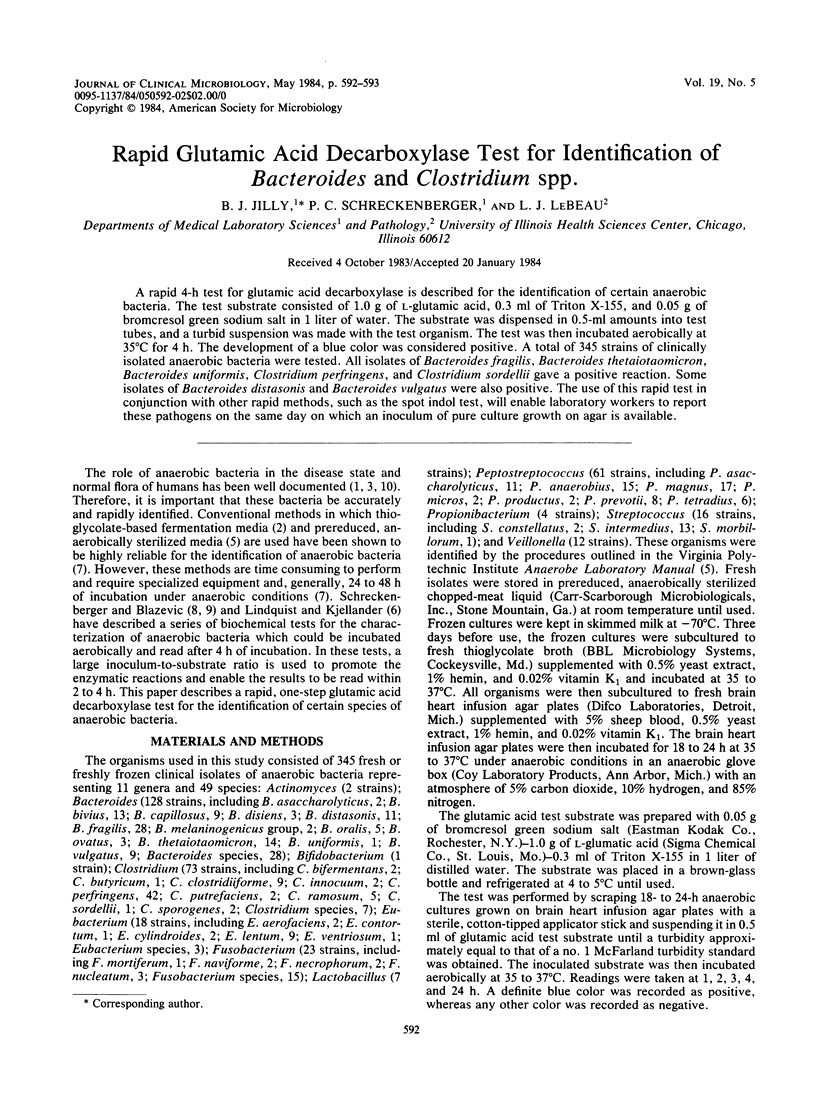Abstract
A rapid 4-h test for glutamic acid decarboxylase is described for the identification of certain anaerobic bacteria. The test substrate consisted of 1.0 g of L-glutamic acid, 0.3 ml of Triton X-155, and 0.05 g of bromcresol green sodium salt in 1 liter of water. The substrate was dispensed in 0.5-ml amounts into test tubes, and a turbid suspension was made with the test organism. The test was then incubated aerobically at 35 degrees C for 4 h. The development of a blue color was considered positive. A total of 345 strains of clinically isolated anaerobic bacteria were tested. All isolates of Bacteroides fragilis, Bacteroides thetaiotaomicron, Bacteroides uniformis. Clostridium perfringens, and Clostridium sordellii gave a positive reaction. Some isolates of Bacteroides distasonis and Bacteroides vulgatus were also positive. The use of this rapid test in conjunction with other rapid methods, such as the spot indol test, will enable laboratory workers to report these pathogens on the same day on which an inoculum of pure culture growth on agar is available.
Full text
PDF

Selected References
These references are in PubMed. This may not be the complete list of references from this article.
- Freier P. A., Graves M. H., Kocka F. E. A rapid glutamic decarboxylase test for identification of bacteria. Ann Clin Lab Sci. 1976 Nov-Dec;6(6):537–539. [PubMed] [Google Scholar]
- Lindquist B. L., Kjellander J. Use of a rapid fermentation test for indentification of anaerobic bacteria. Med Microbiol Immunol. 1978 May 26;165(1):67–72. doi: 10.1007/BF02121233. [DOI] [PubMed] [Google Scholar]
- Moore H. B., Sutter V. L., Finegold S. M. Comparison of three procedures for biochemical testing of anaerobic bacteria. J Clin Microbiol. 1975 Jan;1(1):15–24. doi: 10.1128/jcm.1.1.15-24.1975. [DOI] [PMC free article] [PubMed] [Google Scholar]
- Schreckenberger P. C., Blazevic D. J. Rapid fermentation testing of anaerobic bacteria. J Clin Microbiol. 1976 Mar;3(3):313–317. doi: 10.1128/jcm.3.3.313-317.1976. [DOI] [PMC free article] [PubMed] [Google Scholar]
- Schreckenberger P. C., Blazevic D. J. Rapid methods for biochemical testing of anaerobic bacteria. Appl Microbiol. 1974 Nov;28(5):759–762. doi: 10.1128/am.28.5.759-762.1974. [DOI] [PMC free article] [PubMed] [Google Scholar]
- Sutter V. L., Carter W. T. Evaluation of media and reagents for indole-spot tests in anaerobic bacteriology. Am J Clin Pathol. 1972 Sep;58(3):335–338. doi: 10.1093/ajcp/58.3.335. [DOI] [PubMed] [Google Scholar]
- Wauters G., Cornelis G. Méthode simple pour la recherche de la décarboxylation de l'acide glutamique chez les bactéries à gram négatif. Ann Microbiol (Paris) 1974 Feb-Mar;125A(2):183–192. [PubMed] [Google Scholar]


